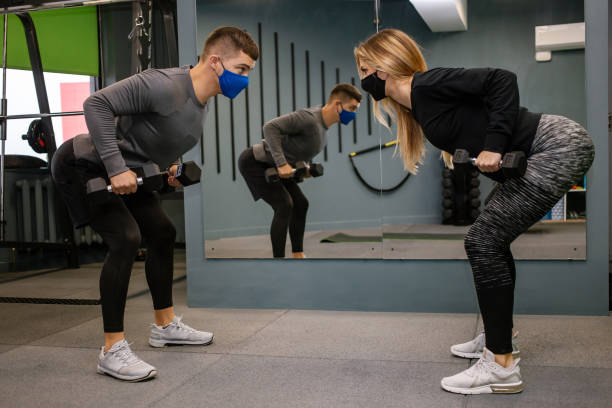In the era of respiratory viruses and health concerns, wearing masks has become a standard practice in various settings. However, when it comes to exercise, many individuals grapple with the decision of whether to keep the mask on or not. In this article, we will explore the pros and cons of wearing a mask while exercising and provide tips for finding the right balance between safety and comfort.
**1. Understanding the Benefits of Mask-Wearing During Exercise
a. Reduced Respiratory Droplets
Wearing a mask helps minimize the release of respiratory droplets, which is crucial in crowded indoor spaces or outdoor settings where social distancing might be challenging.
b. Compliance with Guidelines
In some regions, wearing masks during physical activity is a requirement to adhere to public health guidelines and ensure the safety of oneself and others.
c. Protection in High-Risk Areas
For individuals in regions with high transmission rates or known virus variants, wearing a mask can add an extra layer of protection during exercise.
**2. Challenges of Exercising with a Mask
a. Reduced Oxygen Intake
One of the primary concerns is that wearing a mask may lead to a perception of reduced airflow, potentially causing discomfort and impacting oxygen intake during strenuous exercise.
b. Increased Moisture and Discomfort
Physical activity generates sweat, and wearing a mask can trap moisture, leading to discomfort, skin irritation, and an overall unpleasant experience.
c. Potential for Overheating
Masks may contribute to an increased perception of heat, making it challenging for the body to regulate temperature during intense workouts.
Tips for Exercising with a Mask
a. Choose the Right Mask
Opt for a breathable and moisture-wicking mask designed for physical activity.
Consider masks with multiple layers for added protection.
b. Practice Gradual Adaptation
If you are new to exercising with a mask, start with shorter durations and gradually increase the time as your body adjusts.
c. Stay Hydrated
Proper hydration is crucial. Ensure you drink enough water before, during, and after your workout.
d. Modify Intensity
Adjust the intensity of your workout when wearing a mask. Consider incorporating periods of lower intensity or breaks.
e. Outdoor Exercise
If possible, choose outdoor spaces for exercise to benefit from better ventilation and reduced transmission risk.
f. Listen to Your Body
Pay attention to how your body responds. If you experience dizziness, shortness of breath, or discomfort, consider modifying your activity or removing the mask temporarily.
Conclusion: Finding Your Exercise-Mask Equilibrium
In conclusion, the decision to wear a mask while exercising is a personal one, influenced by factors such as health guidelines, individual comfort, and the exercise environment. By choosing the right mask, gradually adapting to the practice, and being mindful of your body’s signals, you can strike a balance between safety and comfort during your workouts.

